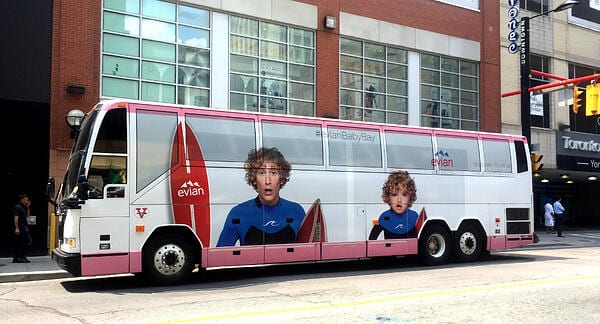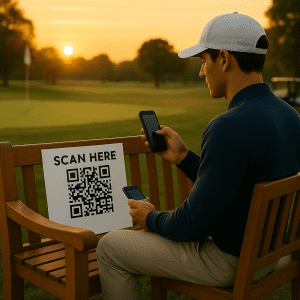Double Decker Bus Advertising: Standing Tall in a Crowded Space
In a world where digital screens compete for every glance, and consumers face advertising overload, how can your brand rise above the noise? Traditional print and TV ads can be costly, and the average consumer’s attention span is shrinking. Enter an unexpected yet highly effective form of outdoor advertising: the double-decker bus. While digital billboards and social media ads capture fleeting moments, advertising on double-decker buses delivers impactful, mobile branding in urban environments.
This blog’ll discuss the benefits, challenges, and ROI of double-decker bus advertising while exploring a more innovative, cost-effective solution for your brand.
Double Decker Bus Advertising: The Concept
Double-decker bus advertising is a form of out-of-home (OOH) advertising that involves wrapping or placing ads on the exterior or interior of double-decker buses. These iconic vehicles, often seen in bustling urban areas, carry bold brand messages across high-traffic locations.
There are two primary formats of double decker bus advertising:
Static Ads involve placing non-digital posters or wraps on the sides, back, or entire bus. The high visibility of these large, static ads ensures that anyone in the vicinity of the bus cannot miss your brand. This is particularly effective for brand awareness campaigns.
Digital Ads: Increasingly, buses are fitted with digital screens that can rotate multiple ads throughout the day. Digital ads offer more flexibility, allowing for targeted messaging based on time of day, event, or location. With digital formats, brands can shift their messaging depending on current events, making campaigns more dynamic and relevant.
Whether you choose static or digital, the mobile nature of double decker buses means that your ad gets prime visibility as the bus moves throughout different parts of the city, reaching a broader audience than traditional billboard placements.
Challenges of Double Decker Bus Advertising
While the double decker bus offers unique advantages in terms of visibility, it’s essential to acknowledge its challenges and limitations. Understanding these challenges will help you make more informed advertising decisions.
Targeting Limitations: Unlike digital advertising, where you can target specific demographics, double decker bus ads are primarily about mass exposure. This makes it difficult to ensure that your message reaches the right audience at the right time. While these buses may cover vast areas of a city, they don’t offer the level of precise targeting that digital channels provide.
High Costs: Double decker bus wraps and digital ads can be expensive. According to industry estimates, full bus wraps can cost anywhere from $20,000 to $75,000 per month, depending on the market size and ad duration. If you’re running a campaign across multiple buses for an extended period, costs can escalate quickly. In contrast, static ads or smaller placements may be more affordable, but they come with reduced impact.
Creative Limitations: The physical size of the bus and local regulations can restrict your creative freedom. While you have a large canvas, there are limits to the design and text you can use without overwhelming or confusing viewers. Ensuring that your message is simple yet impactful is essential for maximizing visibility.
How to Measure ROI for Double Decker Bus Advertising
Measuring the Return on Investment (ROI) for double decker bus advertising requires analyzing several key metrics: reach, impressions, and Cost Per Thousand Impressions (CPM). Here’s how to approach ROI for this OOH advertising method:
Reach: The first step is to calculate the total reach of your campaign. This involves estimating how many people will see the bus per day. For example, buses that travel through high-traffic areas or tourist hotspots will deliver greater reach. In larger cities, buses can reach tens of thousands of people daily.
Impressions: Impressions measure the number of times your ad is likely to be seen. Since buses are in constant motion, they offer higher impressions compared to stationary billboards. You can multiply the daily reach by the number of days the bus runs to get the total impressions for your campaign.
CPM (Cost Per Thousand Impressions): To calculate the CPM, divide the total campaign cost by the total number of impressions and then multiply by 1,000. For example, if your double-decker bus ad costs $50,000 and reaches 1,000,000 impressions during the campaign:
This means you’re paying $50 per 1,000 impressions, which is relatively competitive for OOH advertising but still higher than other channels like digital ads.
Tracking Conversions: One challenge in measuring ROI is tracking how many people convert after seeing your ad. By including QR codes, promo codes, or vanity URLs in your bus ads, you can link offline impressions to online actions, providing a clearer picture of conversion rates.
Closing: Beyond the Bus—Exploring In-Hand Advertising
While double decker bus advertising provides great reach and impressions, it’s essential to evaluate whether this method delivers the engagement and cost-effectiveness your brand needs. If you’re seeking more measurable, targeted options with higher audience interaction, consider the in-hand advertising solutions offered by Adzze.
At Adzze, we specialize in innovative ambient marketing that places your brand directly in the hands of consumers. Our in-hand advertising concepts, such as ads on pizza boxes, coffee cups, or prescription bags, offer a unique way to connect with your audience. These methods deliver hyper-local targeting, ensuring your message reaches the right people, at the right time, in a tangible and memorable way.
Not only are these solutions cost-effective, but they also offer better tracking through promo codes, QR links, and direct engagement. With Adzze’s in-hand advertising, your brand goes beyond visibility—it becomes a part of everyday life.
Ready to explore creative, measurable advertising that stands out from the crowd? Discover the innovative in-hand and ambient marketing options at Adzze today!
Final Thoughts
While double-decker bus advertising can be an impactful form of OOH marketing, brands and agencies should weigh the costs and challenges against their campaign goals. If you’re looking for a more targeted, measurable, and cost-effective option, consider Adzze’s in-hand advertising solutions. Reach your audience where it matters most—directly in their hands.






